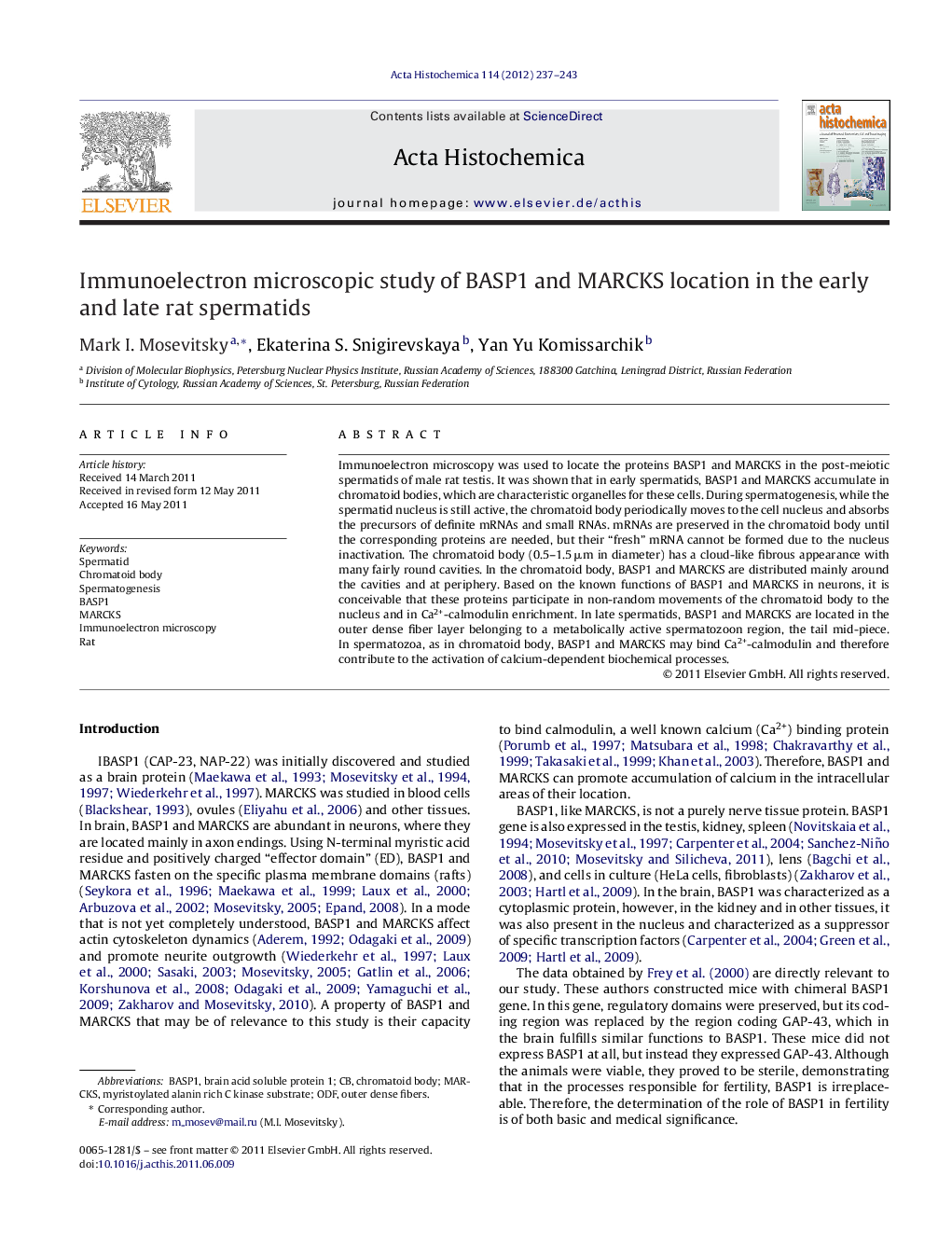| Article ID | Journal | Published Year | Pages | File Type |
|---|---|---|---|---|
| 1923965 | Acta Histochemica | 2012 | 7 Pages |
Abstract
Immunoelectron microscopy was used to locate the proteins BASP1 and MARCKS in the post-meiotic spermatids of male rat testis. It was shown that in early spermatids, BASP1 and MARCKS accumulate in chromatoid bodies, which are characteristic organelles for these cells. During spermatogenesis, while the spermatid nucleus is still active, the chromatoid body periodically moves to the cell nucleus and absorbs the precursors of definite mRNAs and small RNAs. mRNAs are preserved in the chromatoid body until the corresponding proteins are needed, but their “fresh” mRNA cannot be formed due to the nucleus inactivation. The chromatoid body (0.5-1.5 μm in diameter) has a cloud-like fibrous appearance with many fairly round cavities. In the chromatoid body, BASP1 and MARCKS are distributed mainly around the cavities and at periphery. Based on the known functions of BASP1 and MARCKS in neurons, it is conceivable that these proteins participate in non-random movements of the chromatoid body to the nucleus and in Ca2+-calmodulin enrichment. In late spermatids, BASP1 and MARCKS are located in the outer dense fiber layer belonging to a metabolically active spermatozoon region, the tail mid-piece. In spermatozoa, as in chromatoid body, BASP1 and MARCKS may bind Ca2+-calmodulin and therefore contribute to the activation of calcium-dependent biochemical processes.
Keywords
Related Topics
Life Sciences
Biochemistry, Genetics and Molecular Biology
Biochemistry
Authors
Mark I. Mosevitsky, Ekaterina S. Snigirevskaya, Yan Yu Komissarchik,
